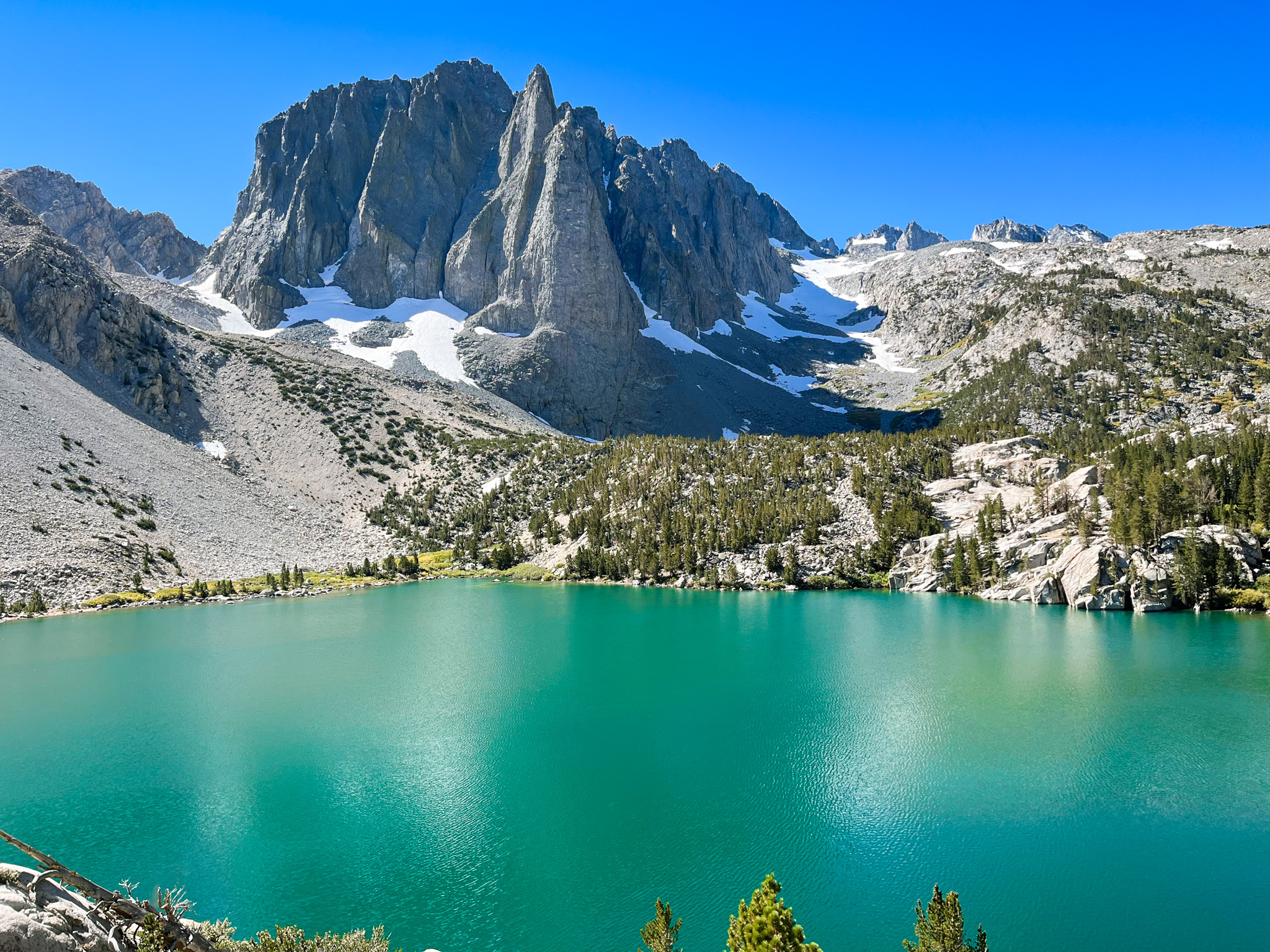

BIG PINE LAKES
Where: Eastern California (closest city: Bishop)
Why Go: Hike to bright teal alpine lakes framed by dramatic mountains
Hike Stats: 9.5 miles and 2,400 feet elevation gain (longer variations possible)
How Long to Visit: 1 – 4 days (day hike or camp overnight)
When to Go: Spring through fall
What to Bring: Downloaded trail maps, day hiking or backpacking gear, permit (if camping)
The Big Pine Lakes are an iconic California destination just 4 hours from Los Angeles, famous for their vivid blue water and dramatic mountains. You can see a total of 9 lakes on this trail!
The highlight of a trip here is Second Lake, which is intensely colored and towered over by the dramatic Temple Crag. You can easily visit Second Lake as well as First Lake in a day hike. However if you’re lucky enough to snag a Big Pine Lakes camping permit, you’ll have time to visit additional alpine lakes and even the Palisade Glacier.
This trail is truly breathtaking, and in this Big Pine Lakes guide I’ll share detailed information that will help you plan your visit. I’ll also recap my Big Pine Lakes backpacking trip, which will give you an idea of what to expect!
If you need a refresher, check out my guide to day hiking and beginner’s guide to backpacking. For more places to explore in California, browse my California destination guides.
Related Articles:
Hungry Packer Lake
Fall Colors in the Eastern Sierra
Big McGee Lake
Little Lakes Valley
Bishop Pass
Why are the Big Pine Lakes so Blue?
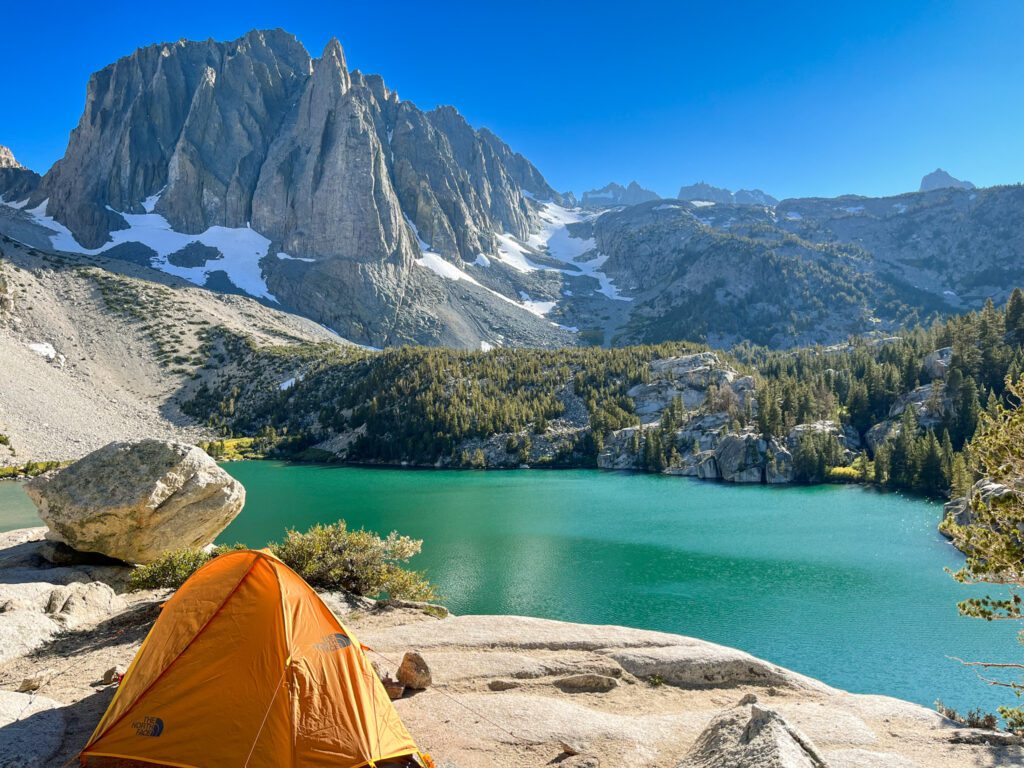

Fun fact: The distinctive blue color of the Big Pine Lakes is due to glacial flour in the water. Yes, there are glaciers in this region! The Palisade Glacier, which you can visit as part of your trip to Big Pine Lakes, is the southernmost glacier in North America.
It’s amazing to think that just a few hours away from Death Valley, one of the hottest places on earth (record temperature of 134.1 °F, or 56.7 °C), you can encounter glaciers. California is full of impressive contrasts, and I’m excited to share them with you.
Big Pine Lakes Backpacking Trail Report
First Lake Trail Report
I decided to do the Big Pine Lakes hike somewhat impulsively and was lucky to find a camping permit near the end of September. One undeniable perk of solo hiking is the flexibility to make last-minute plans and secure a permit for one!
Although it was no longer the peak of summer, I still felt the heat during the first 2 miles of the hike, which were steep and unshaded. The trail flattened out once I reached the river and first waterfall. The subsequent couple of miles were a calm walk through the forest. This section of the trail passes by the Lon Chaney stone cabin and several small waterfalls.
The trail became steep again just before First Lake, which is at the 4.5 mile mark. First Lake’s intense blue color was promising and motivated me to keep ascending towards Second Lake.
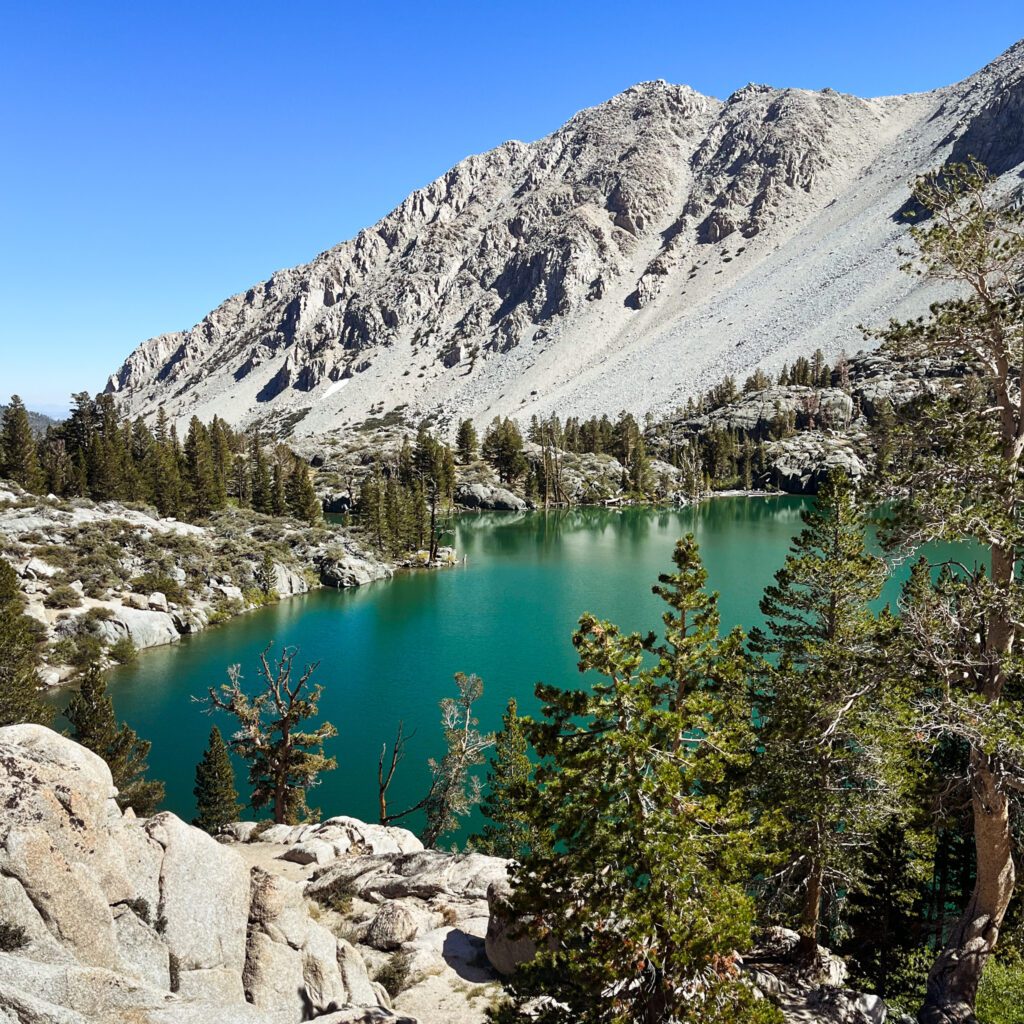

Second and Third Lakes
Second Lake was just as breathtaking as the pictures I’d seen, and the experience of being there felt surreal. I pitched my tent on a large empty ledge overlooking the lake, thinking to myself that this may be the most scenic place I’ve ever camped.
Next I set out to refill my water, which was challenging since my campsite was perched high above the lake. I decided to continue to Third Lake, which had a small beach-like area and pale blue waters. I also checked out Sam Mack Meadow (the start of the Palisade Glacier trail) for future reference. The meadow’s golden-green color indicated that fall was on its way.
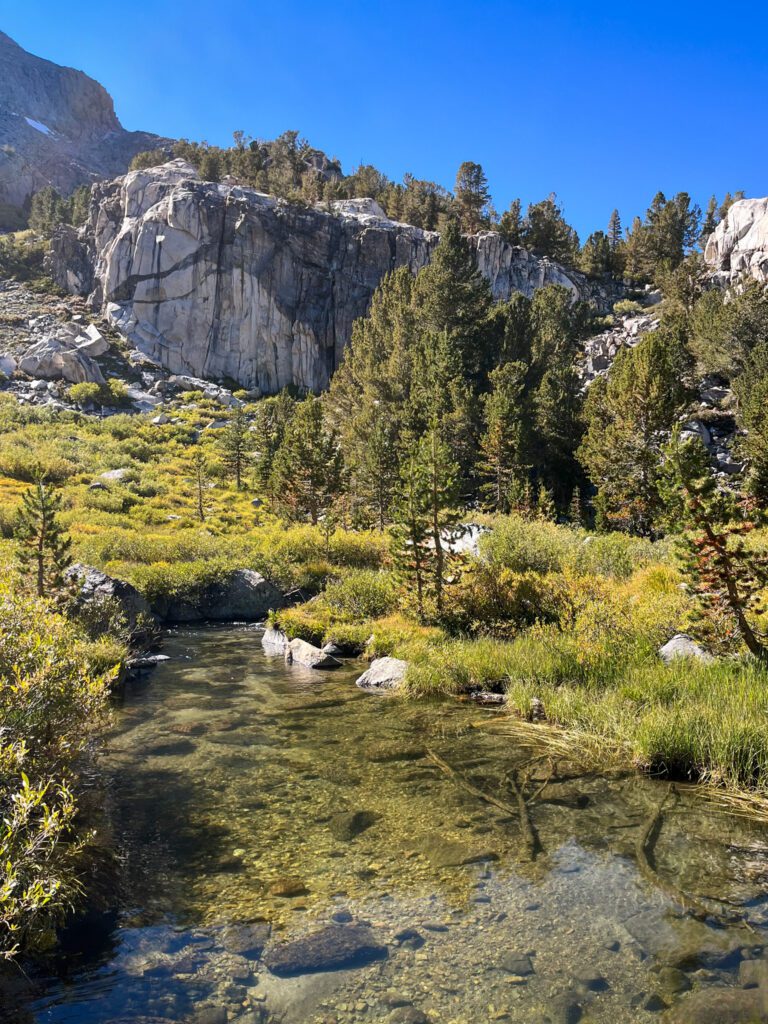

Camping at Second Lake
For the remainder of the afternoon I relaxed at my campsite at Second Lake, observing the changing color of the water as the sun set. I stayed up until the sky was dark enough for stargazing. Seeing the full moon rose rising from behind the mountains was a beautiful experience.
Unfortunately I didn’t sleep too well because a pseudo couple decided to pitch their tent very close to mine, and I woke up several times from their loud late night conversations and giggling. I was a little frustrated because there were many other available campsites they could have chosen. However I tried to remind myself that considering how crowded the Big Pine Lakes can get, it could have been a lot worse.
The next morning I woke up before sunrise and was rewarded by the sight of the mountaintops glowing intensely red. Honestly speaking, I also felt slightly smug that my neighbors were still fast asleep. I then set off to explore the rest of the upper lakes.
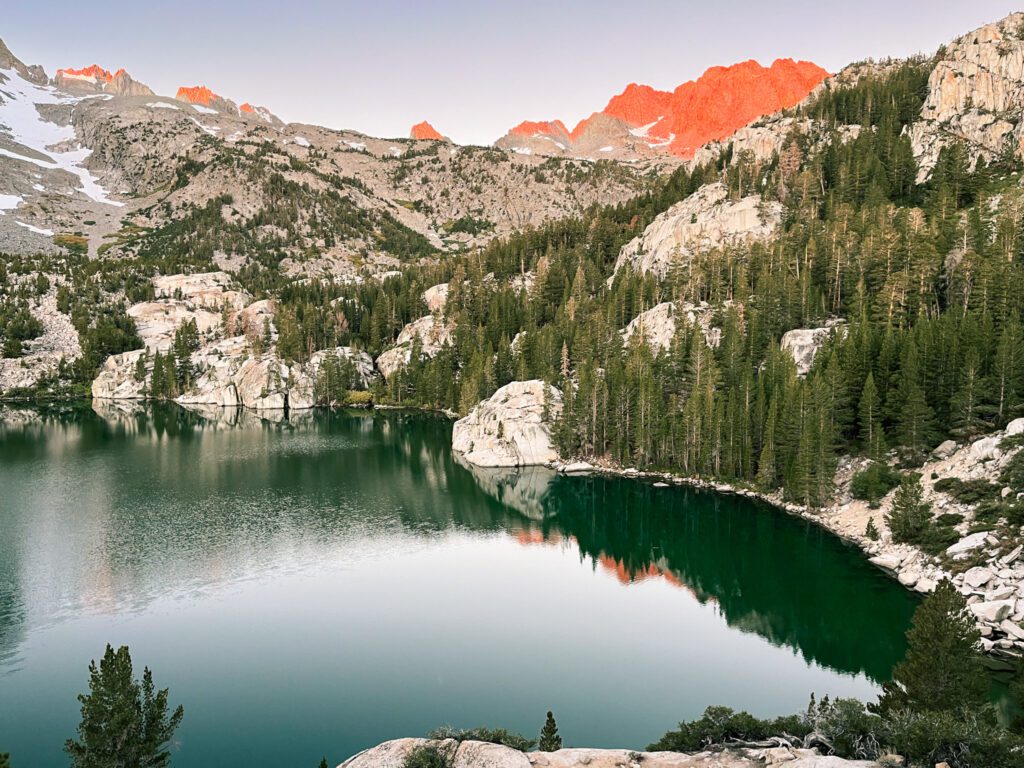

Fourth, Summit, Sixth, and Seventh Lakes
After leaving Second Lake, I headed towards Fourth Lake. This lake lacked the pastel blue shade of some of the other lakes on the Big Pine Lakes trail, but its calm surface and deep color created a perfect reflection of the mountains above it.
I then continued to Summit Lake, which was also colorless but serene. Next was Sixth Lake, also uncolored and in addition obscured by a dense forest. The official trail ended here. Curiosity got the best of me and I couldn’t resist checking out the last lake in the area, Seventh Lake. I had to navigate off-trail through a swampy area to get there. Seventh Lake was a little underwhelming compared to the other lakes on the trail, making me question whether the swampy detour was worth it.
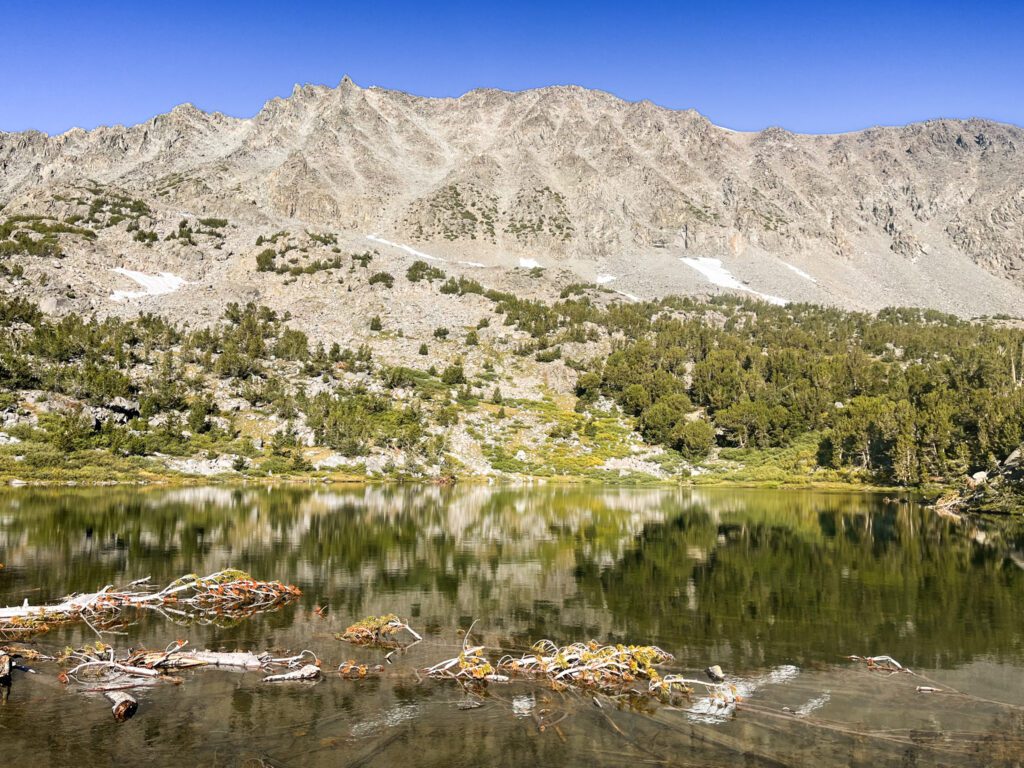

Aerial Lake Views and Fifth Lake
I retraced my steps to the trail, intending to head back to Fifth Lake. Along the way, I came across a deer with a bulky tracking camera around its neck! I was feeling a little adventurous, so I took a chance on an unmarked and lightly trafficked trail that led to a rocky vista. The view at the top overlooked Sixth Lake, which was actually quite beautiful when seen from above.
I continued further along the rocks to see Fourth and Fifth Lakes from above. I then made a somewhat sketchy descent to the official trail and soon after reached Fifth Lake. Of all of the Big Pine Lakes, Fifth Lake was the second most brightly-colored after Second Lake. Its picturesque scenery and expansive forested camping area made it a popular choice among Big Pine Lake backpackers.
I eventually made my way back to Second Lake, regretting that I’d planned only a one-night stay there. Begrudgingly, I packed up my tent and hiked out. I consoled myself with the hope of planning a return trip to Big Pine Lakes the next summer, when the lake would be perfect for swimming.
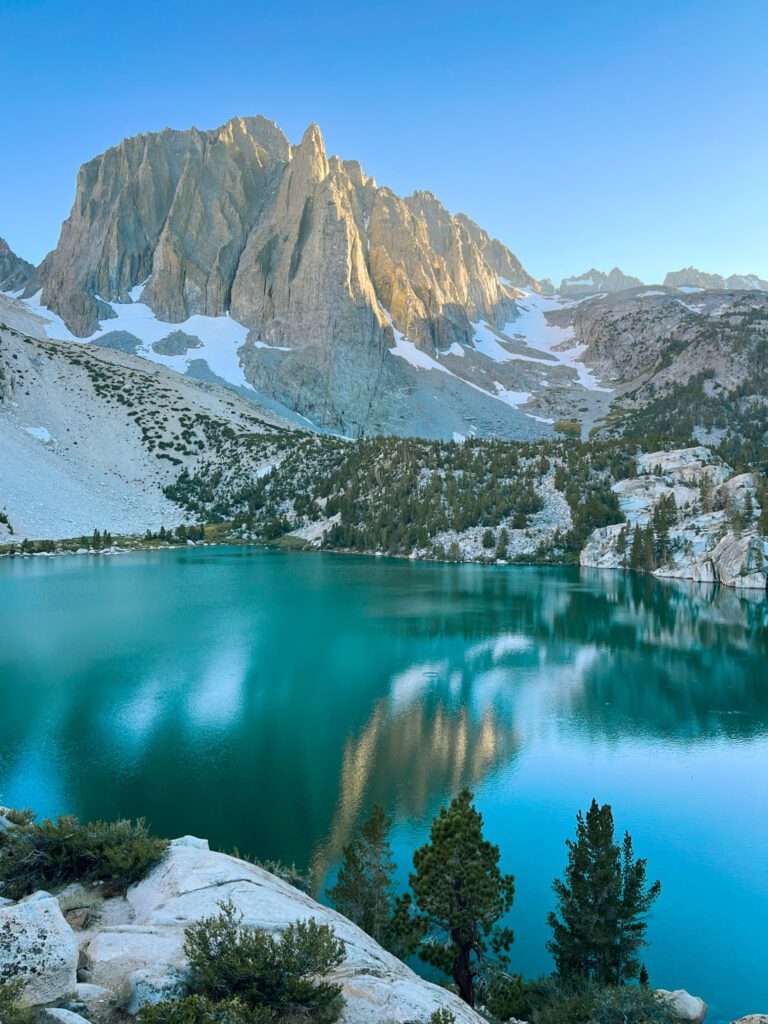

Trip Planning Information
Big Pine Lakes Map and Trail Information
The Big Pine Lakes hike is strenuous and can be done in as little as a day, or as a leisurely multi-day backpacking trip. The majority of the trail is well-maintained and easy to follow.
The Big Pine Lakes day hike usually consists of a visit to First and Second Lakes. This route is 9.5 miles round trip, with 2,358 feet elevation gain. The hike to reach all Seven Lakes is ~16 miles round trip, with 4,000 feet elevation gain.
Adding a visit to the Palisade Glacier is an additional ~4.5 miles and ~2,000 feet elevation gain. This trail to the glacier starts approximately 0.5 miles after Third Lake and gives you fantastic aerial views of the Big Pine Lakes.
Which Big Pine Lakes to Visit?
The colors of the Big Pine Lakes appear brightest when the sun is strong. First, Second, and Fifth Lakes are the most brightly colored.
If you’re short on time, I would skip Sixth and Seventh Lakes as well as Summit and Black Lakes. Here’s why: Sixth Lake is obscured by trees and you won’t get a good view unless you’re willing to go significantly off trail. Seventh Lake is a bit underwhelming and requires navigating off-trail through a swampy area to get there. Summit and Black Lakes are easier to get to, but they are not colorful like the other lakes on the trail.
Big Pine Lakes Useful Tips
- Limited phone service. Expect limited to no phone service on the road to the trailhead and on the trail itself. Download Google Maps of the area and hiking trail GPS information in advance.
- Altitude awareness. Altitude sickness can occur above 8,000 ft elevation. The trailhead is at 7,600 ft, and the Big Pine Lakes are at ~10,000 – 11,000 ft. Take it slow, stay hydrated, and turn around if needed.
- Beat the heat. Start hiking early, especially in summer. The trail can get hot, especially the first 2 miles which are completely unshaded.
- Leave no trace. Let’s make sure this place stays beautiful!
- Check trail conditions. Check that the Big Pine Lakes trail is clear of snow and ice before visiting. This especially applies if you’d like to visit the Palisade Glacier, which is at 12,300 ft elevation.
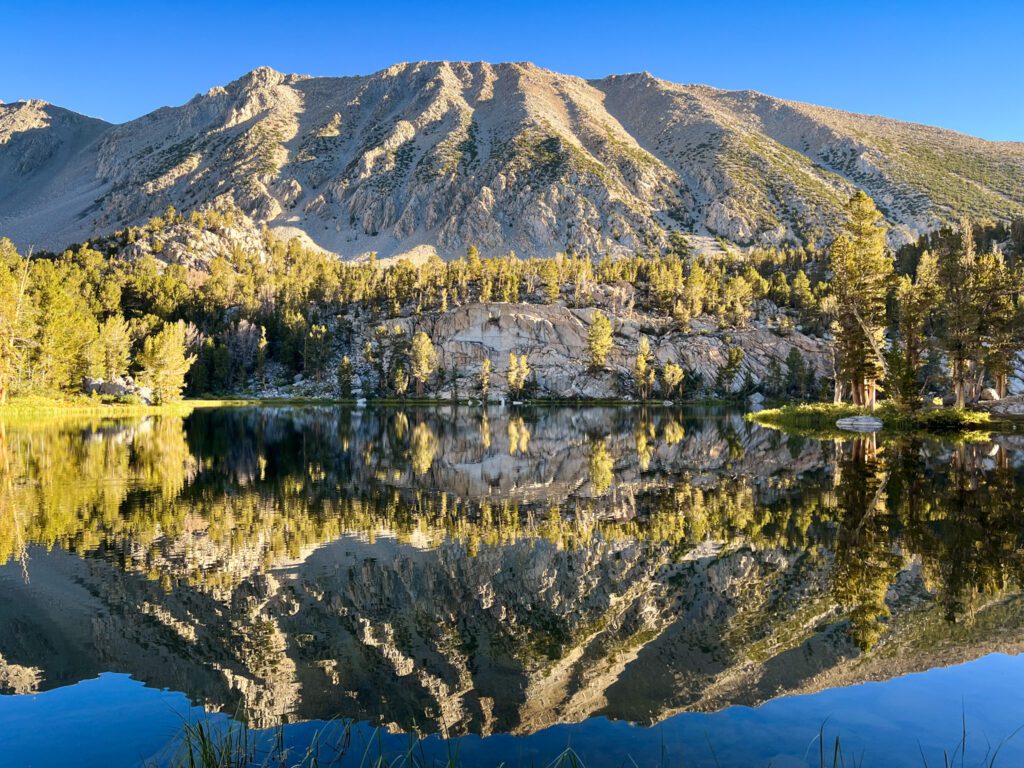

Big Pine Lakes Weather and When to Go
Aim to visit the Big Pine Lakes between late spring and early fall. Depending on the year, the trail may have ice and snow from late October to July. Check recent trail reports on AllTrails and call the Inyo National Forest ranger for information on current trail conditions.
The trail gets very busy on summer weekends. If you can, visit on a weekday or during shoulder season. In addition to avoiding crowds, this will increase your chances of getting a Big Pine Lakes camping permit.
Temperatures on the trail in summer are very hot during the day and cool at night. If you’re hiking in fall, check local conditions first. Fall wildfires are common.
Park Information
The Big Pine Lakes hike is located in the John Muir Wilderness of the Inyo National Forest. There’s no entrance fee or specific opening hours for the trailhead. Dogs are allowed on the trail.
Big Pine Lakes Permits
If you’re doing a day hike to Big Pine Lakes, you don’t need a permit.
If you’d like to camp overnight at Big Pine Lakes, a permit is mandatory. From May 1 through November 1, there is a limit of 25 people per day. 60% of the permits are released 6 months in advance, and the remaining 40% are released 2 weeks in advance. Reserve your permit early and have backup dates in mind due to the trail’s popularity. Also consider going on a weekday in shoulder season to increase your chances.
When you’re ready to reserve your permit, visit the reservation site and select “JM23 Big Pine Creek North Fork”. Remember to print your Big Pine Lakes permit before your trip and bring it with you.
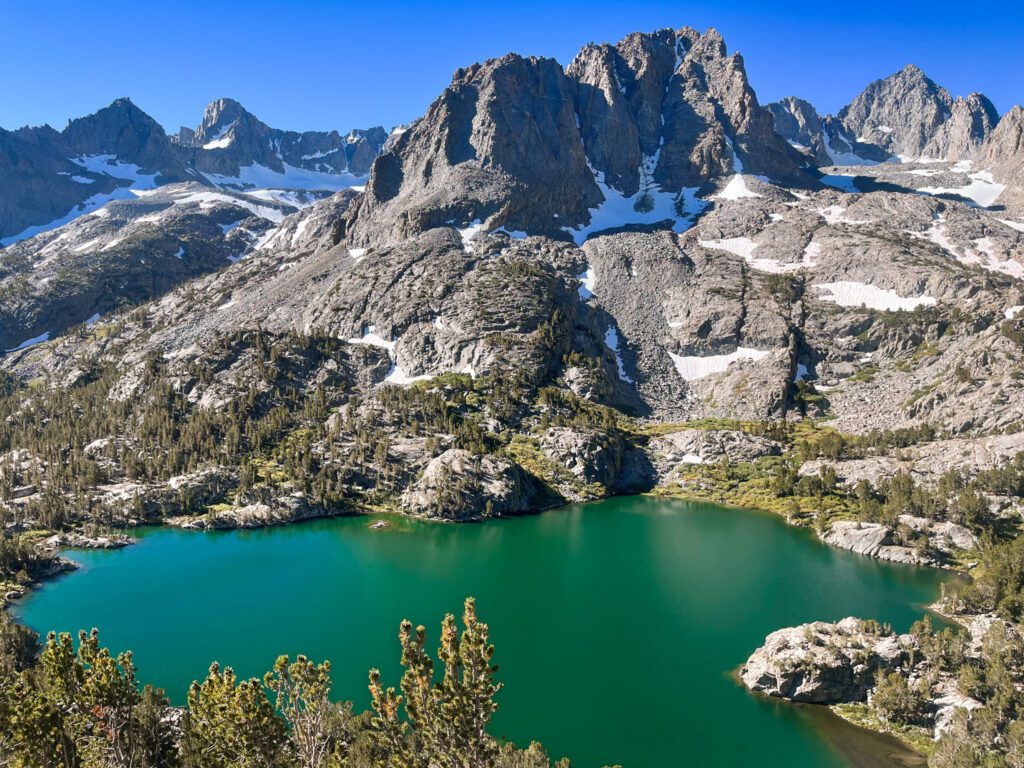

Big Pine Lakes Directions and Parking
The Big Pine Lakes are located along Highway 395, on the Eastern side of California’s Sierra mountains. The closest city is Bishop (30 min). The trailhead is a 4 hour drive from Los Angeles, and 7 hours from the Bay Area.
If you’re coming from the Bay Area, the shortest route will likely be through Tioga Pass. Check that Tioga Road is open for the season. This route passes through Yosemite Park, so be ready to pay the entrance fee and expect heavy traffic on weekends and holidays.
The road to the trailhead is paved. For day hikers, navigate to “Big Pine Creek Trailhead”, located at the end of Glacier Lodge Road. For overnight campers, navigate to “Big Pine Creek Overnight Parking”.
The parking lots have restrooms. They also have bear boxes, and you should avoid leaving any scented items in your car. Also, arrive early to ensure a parking spot! The Big Pine Lakes trail is very popular and the lot fills up quickly.
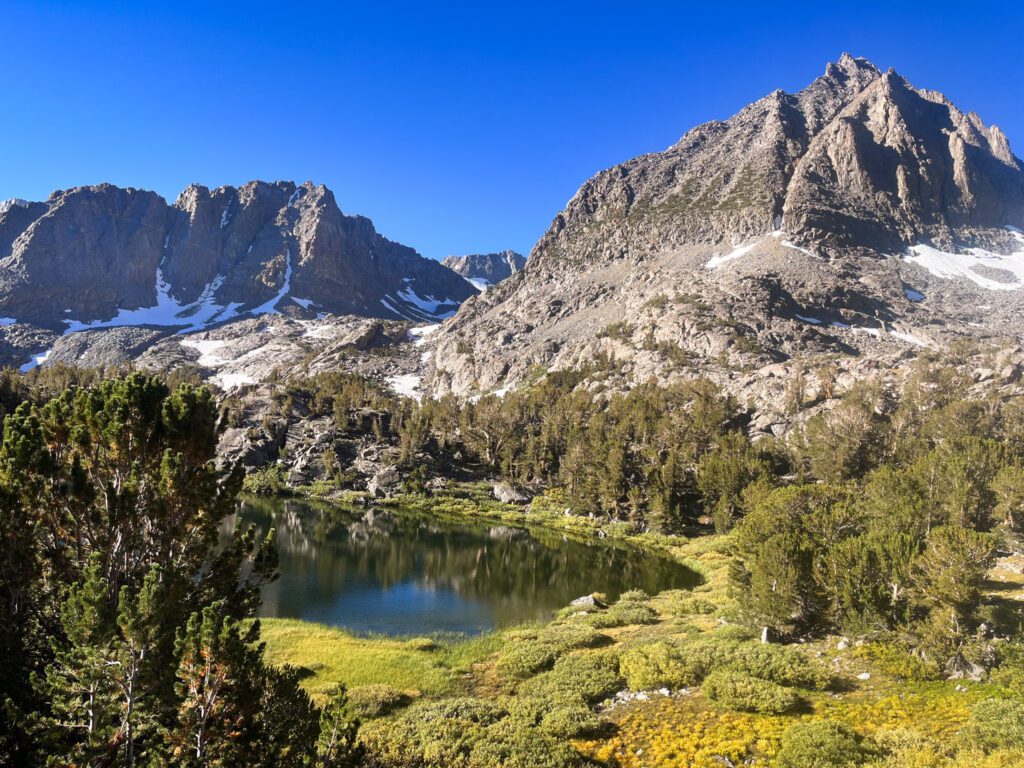

What to Bring to Hike the Big Pine Lakes
For a full list of what to bring to Big Pine Lakes, refer to my complete day hiking and backpacking checklists. For this hike I would stress the following:
Big Pine Lakes Day Hike Items
- Trail Map. Download the map for offline navigation.
- Day Hiking Backpack or Backpacking Pack (Women’s, Men’s). Invest in a high-quality and durable pack that will last for years!
- Hiking Shoes. Women’s, Men’s. I do not recommend running or general athletic shoes for this hike. Their lack of traction will cause you to slip.
- Hiking Socks. Women’s, Men’s. Wool is essential to keep your feet dry and blister-free.
- Hiking Pants. Women’s, Men’s. I love these pants because they are lightweight, durable, and have pockets.
- Hiking T-Shirt. Women’s, Men’s. Quick-drying T-Shirts are ideal. Tank tops will cause your skin to rub uncomfortably against your backpack straps.
- Lightweight Long-Sleeve Shirt. Women’s, Men’s. This is the best way to protect yourself from the sun and mosquitos.
- Swimsuit and Microfiber Towel. You’ll want to swim in these lakes!
- Trekking Poles. These will save your knees on descents and provide stability when crossing streams and rocky terrain.
- Hat. This hike is very exposed, so protect yourself from the sun.
- Sunscreen.
- Lip Balm with SPF.
- Mosquito spray. I love this all-natural one because it’s very effective and doesn’t contain harmful chemicals.
- Mosquito head net. Mosquitos can be unbearable in some seasons. I use this to prevent them from getting in my eyes and mouth or biting my face.
- Water in a Reservoir or Bottle. Bring a lot of water – this is a long and hot hike.
- Water Filter. Bring a filter so you can carry less water!
- Electrolytes. These help prevent dehydration and fatigue, especially on strenuous hikes in hot weather and high elevation.
- Snacks, Packed Lunch
- Portable Charger and Cable. It’s good to be prepared if your phone battery dies.
- Headlamp and Spare Batteries. Whether or not you plan to camp, this is a safety essential.
- Garmin inReach (optional). Sends your GPS coordinates and calls for help in emergency situations.
- First-Aid Kit
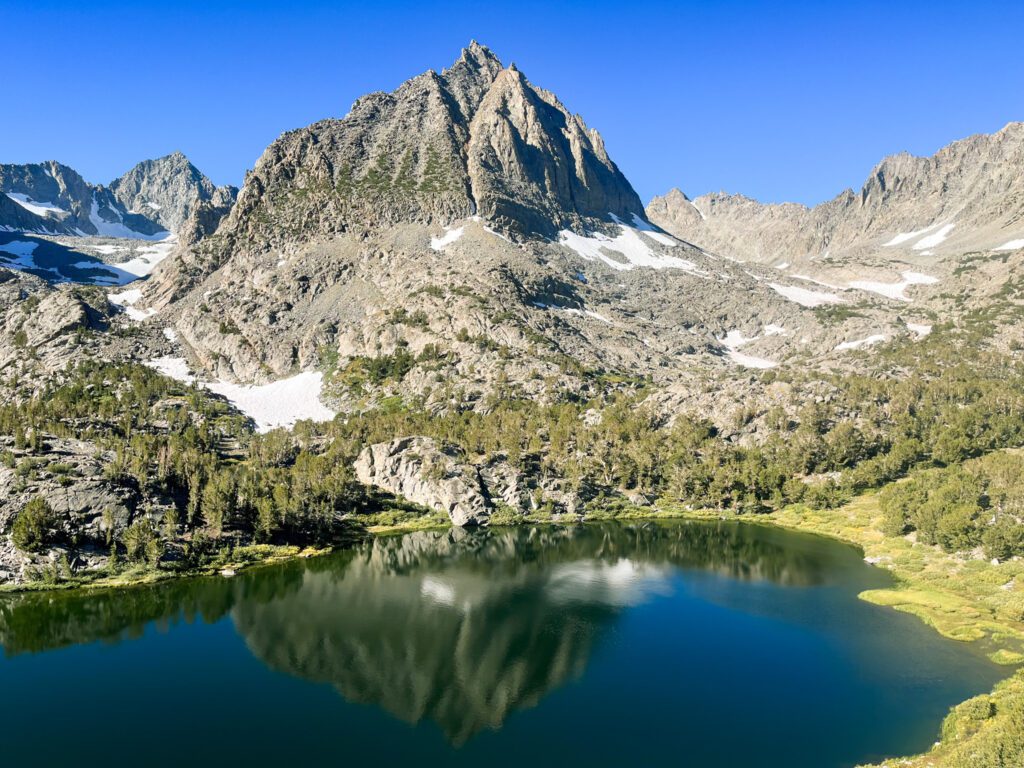

Big Pine Lakes Backpacking Items
- Bear canister. Bear canisters or bags are required for camping in this area.
- Tent
- Sleeping Pad
- Sleeping Bag and Compression Sack
- Stove
- Puffy Jacket. Women’s, Men’s. It gets cold at night.
Big Pine Lakes Camping Locations (for Backpackers)
Second Lake is the most scenic spot to camp on the Big Pine Lakes hike, and consequently the most popular (and at times crowded). Most of the campsites at Second Lake are exposed and situated along the ridge above the lake. There are a few forested sites along the path leading to the water. The path leading down to the lake is long and steep, making water access challenging.
I saw many great places to camp (with less crowds and easier water access) at Third Lake, Fourth Lake, Fifth Lake, Sixth Lake, and Summit Lake.
You may be able to camp at First Lake as well, but the shore is steep and access to the water there is challenging. I don’t recommend camping at Seventh Lake since the area around it is swampy and there is no official trail to get there.
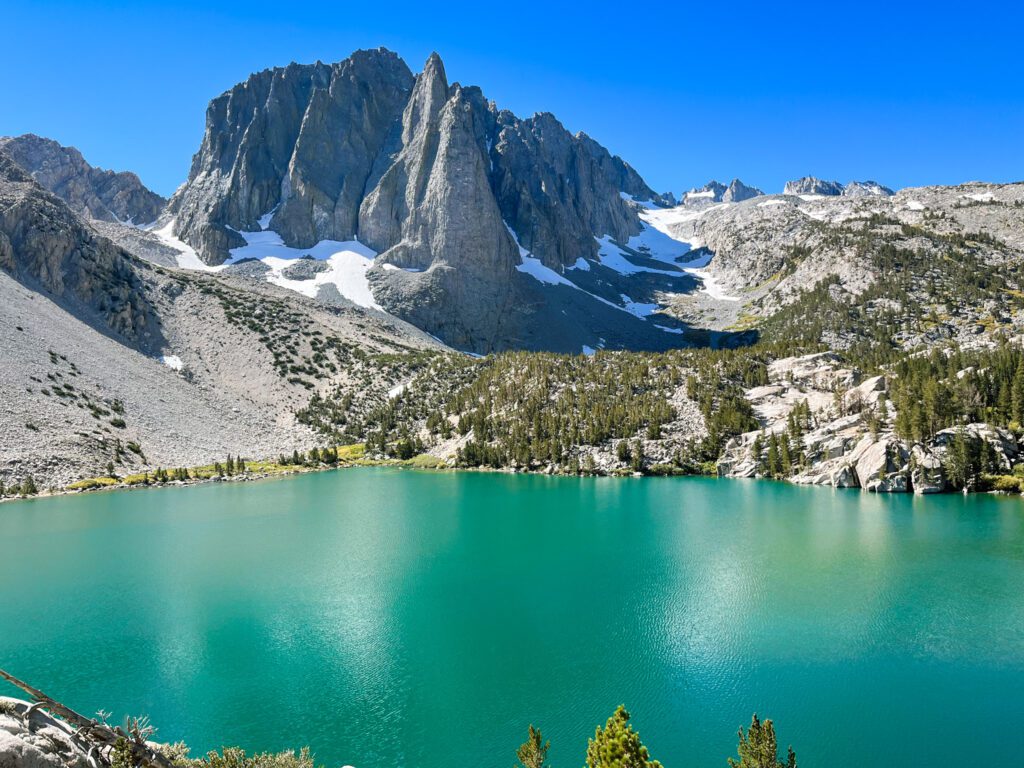

Backpacking Water Sources
If you’re hiking with a filter, bring enough water for the first 2 miles. This section is hot, exposed, and without convenient water sources.
Refill at one of the waterfalls after Lon Chaney Cabin – you’ll want sufficient water during the ascent to First Lake. First and Second Lakes are not convenient places to get water due to their long and steep shorelines. All of the other lakes are much more accessible.
Where to Stay
Before hiking to Big Pine Lakes, it’s a good idea to stay nearby the night before to ensure an early start on the trail and to acclimate to the altitude. I frequently get mild altitude sickness in this area and can attest to the importance of getting a good night’s sleep nearby to adjust.
Big Pine Lakes Camping
Reserve nearby campsites (open seasonally) at Sage Flat, Upper Sage Flat, or Big Pine Creek campgrounds on recreation.gov up to 6 months in advance. Make sure to reserve early, as spots tend to go quickly in the high season.
There are additional Inyo National Forest and BLM campgrounds nearby as well.
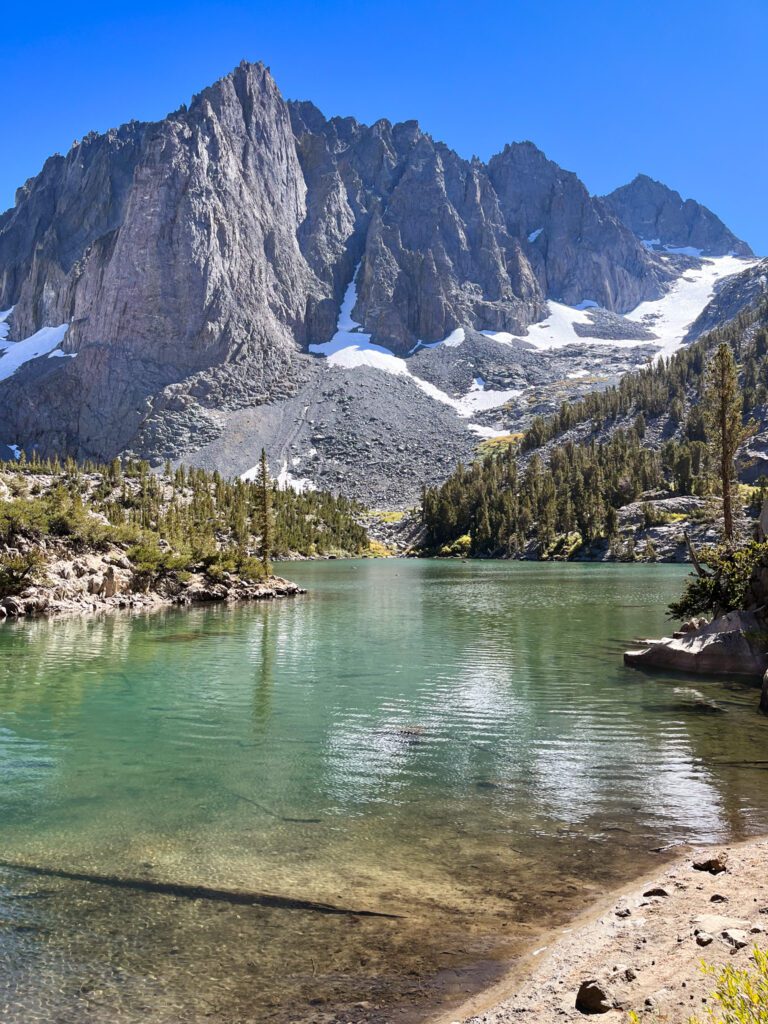

Nearby Accommodation
Big Pine
Budget: Bristlecone Motel. The closest budget accommodation near the trailhead.
Splurge: Glacier Lodge. The cabins are basic but located right next to the trailhead.
Bishop
Budget: The Hostel California. Whether you choose a private room or shared dorm, this is a comfortable place to stay where you’ll likely meet other hikers. The kitchen will come in handy to prepare your hiking snacks.
Mid-Range: Holiday Inn Express Hotel & Suites, Eastside Guesthouse and Bivy
Mammoth Lakes
Mid Range: Juniper Springs Resort
Splurge: The Westin Monache Resort
Things to Do Near Big Pine Lakes
Big Pine Lakes Map of Nearby Attractions
California’s Eastern Sierra region is full of interesting attractions. This area has some of the best hiking in all of California, so I’d recommend checking out some other hikes if you have the time. If not, there are still many places you can visit that involve minimal hiking.
North of Big Pine Lakes: Keough’s Hot Springs, Erick Schat’s Bakery, Crowley Lake Stone Columns, Hot Creek Geologic Site, Wild Willy’s Hot Springs, Convict Lake, Devil’s Postpile, Mammoth Lakes, June Lake Loop, Mono Lake
South of Big Pine Lakes: Manzanar National Historic Site, Alabama Hills, Whitney Portal Road
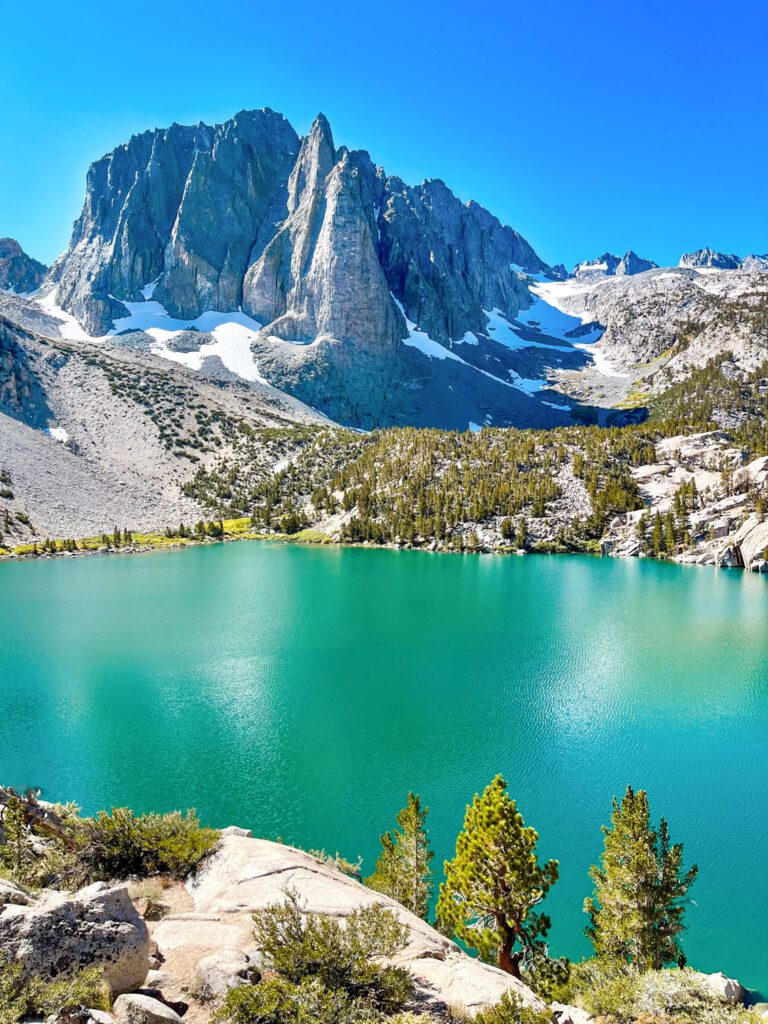

Thanks for reading, and I hope this detailed information helps you plan your hike to Big Pine Lakes. Let me know if you have any questions in the comments. Happy trails!
For more places to explore, check out my guides to other hikes and backpacking trips in California.
Confirm all logistical and safety information before your trip. Also If you buy through links on this site, I may earn an affiliate commission. Thanks for supporting me in creating free content for you to enjoy!
Save this post for later and share on Pinterest!
HIKING TRIP RESOURCES
Head to my Travel Resources Page for more recommendations.
Hiking Checklist and Backpacking Checklist. Make sure you have everything you need before heading out.
Viator and Get Your Guide. If you don’t want to hike or camp alone, there are various organized tours you can join, ranging from day trips to multi-day excursions.
Booking.com. This is my go-to platform for booking accommodation since it consistently gives me competitive prices and additional discounts based on usage.
LifeStraw. This easy-to-use water filter guarantees that you always have access to clean drinking water.
Travel Credit Card. Earn substantial points for travel-related expenses and a very generous bonus when opening an account.
Comments




Hi, I’m Kristina! I’m a solo female traveler sharing my personal experiences around the world. Authentic travel is important to me; in my destination guides I emphasize not just the most spectacular sights but also the local stories and history.
Other things I’m passionate about are discovering hidden gems, budget-friendly travel, and hiking and backpacking. My goal is to show you how to seek adventurous experiences for yourself!

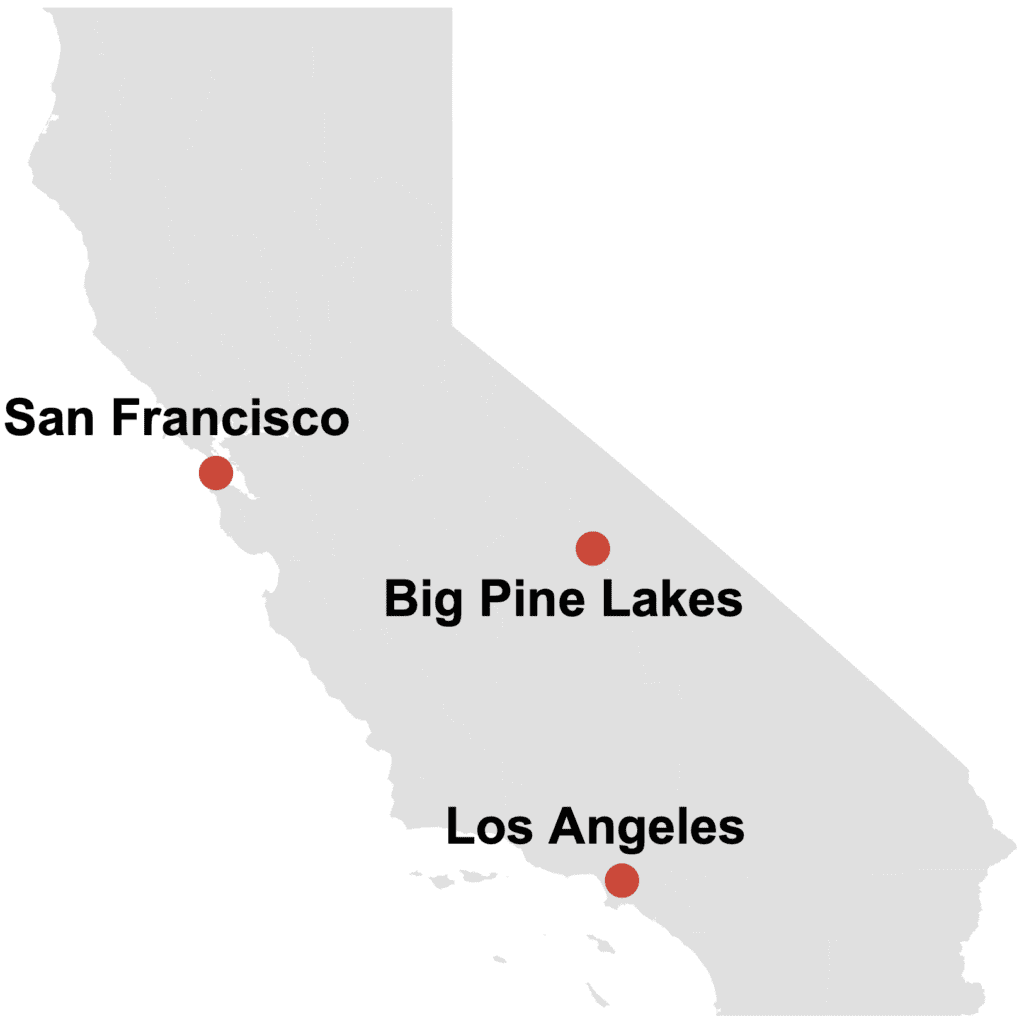
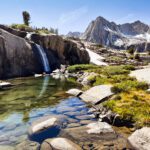
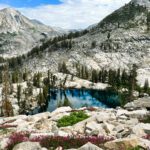
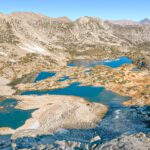
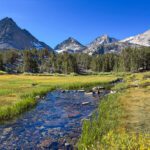
Leave a Comment